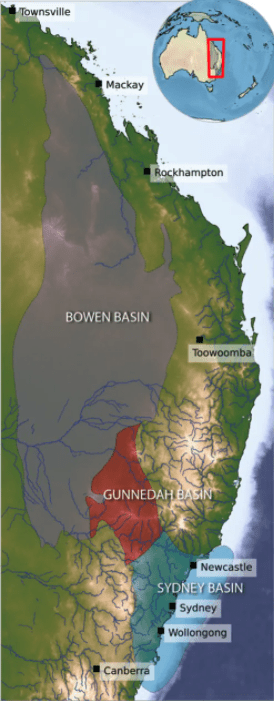UNIVERSITY of Sydney researchers say they have identified a groundwater ‘superhighway’ along Australia’s east coast.
Stretching from Canberra to Brisbane, the flow of water connects aquifers (underground layers of water-bearing permeable rock) that stretch for thousands of kilometres.
 In the case of the recent ongoing floods – among the largest on record – these aquifers store a significant amount of floodwater – up to 20 percent of it.
In the case of the recent ongoing floods – among the largest on record – these aquifers store a significant amount of floodwater – up to 20 percent of it.
Floodwaters seep through rock layers into groundwater aquifers via stream beds and soil.
The study’s lead author, Dr Ben Mather from the School of Geosciences, said the aquifers are especially useful during drought conditions. “Surface and groundwater sources are connected. Groundwater acts as a buffer during flood and drought, by either soaking up or providing water supplies as the situation demands.”
During flooding or bushfires, groundwater can also be a source of safe drinking water as overhead rock and soil layers filter contaminated surface water.
How fast is a drop of water?
Built from sediment from the Permian (around 300 to 250 million years ago) and Triassic (around 250 to 50 million years ago) geological periods, the superhighway transports groundwater from the Great Dividing Range into Sydney Harbour and off the continental shelf. On average, it takes a droplet of water 300 to 1,000 years to travel from its source to coastal aquifers.
Groundwater extraction threatens water security
The study, published in Nature’s Scientific Reports, also examined the impact of pumping (using groundwater for productive activities) on water reserves and conditions.
“Growing human reliance on surface water for urban use and groundwater for agriculture and mining are changing our naturally interconnected water system,” Dr Mather said.
“We are now seeing widespread and long-lasting effects from the last 20 years of groundwater pumping.”
Since the year 2000, groundwater pumping has resulted in a seven-metre drop in aquifers across eastern Australia, and up to 17 metres in inland regions.
This leads to increased pressure on surface water supplies.
It can also increase water salinity during drought conditions; as groundwater levels drop and stop naturally replenishing rivers, water evaporation leaves salt behind, with negative implications for rural and urban water users.
To view the article in Nature click here
Source: University of Sydney

The term Superhighway is nonsense and extremely misleading. In the Nature article there is a groundwater speed mentioned – 0.005 metres per day. That would make a snail look like a racing driver.
For those who made comments about short term use of these aquifers, please note the 300 to 1000 years it takes to get from one area to the other. You cannot make it go much faster, it is all about the porosity and permeability of the sandstones. There is no underground river, it is just the water trickling between the sand grains in the sandstone.
Until we get a proper state and fed govt that will not destroy our natural water supply and other Natural stuff such as tree , grass mountains all of which are cogs in the way nature is meant to work we can kiss these water aquifers good bye. This is so relevant for the land and not so relevant to money hungry companies who wish to hold the average person to ransom over natural needs such as water and the likes
Wll as I see it instead of building proper catchments and dams that will cater for a growing population for years to come. The relative govts will drain those water supplies and then ble all but themselves as per usual
I have known about the underwater river 38years ago 59now told Penrith council that sed not interested flow indication dam at valley hites between hwy and rail small dam 100s metres dep
Can floodwaters be quick.y diverted into aquifers using holes or “plugs” opened at ground level and leading into the aquifer?
I think we could use these to transfer water, why build a pipeline if it exists under the ground. Pump water in from the north and let it find it’s way south 😁
Has the recent floods filled these aquifers? If the aquifers empty into Sydney Harbour what is the ratio of water extraction and discharge into Sydney Harbour? How long does it take to replenish the aquifers during times of heavy rain and flooding?
We know so little about our aquifers however we allow clowns to frack this most extraordinary resource.
And we are subsidizing them to boot!Yeap you dont know what got till its gone..
That’s correct Karl but getting government’s and some individuals to listen is a very big and hard job,we will see who’s been listening in May .